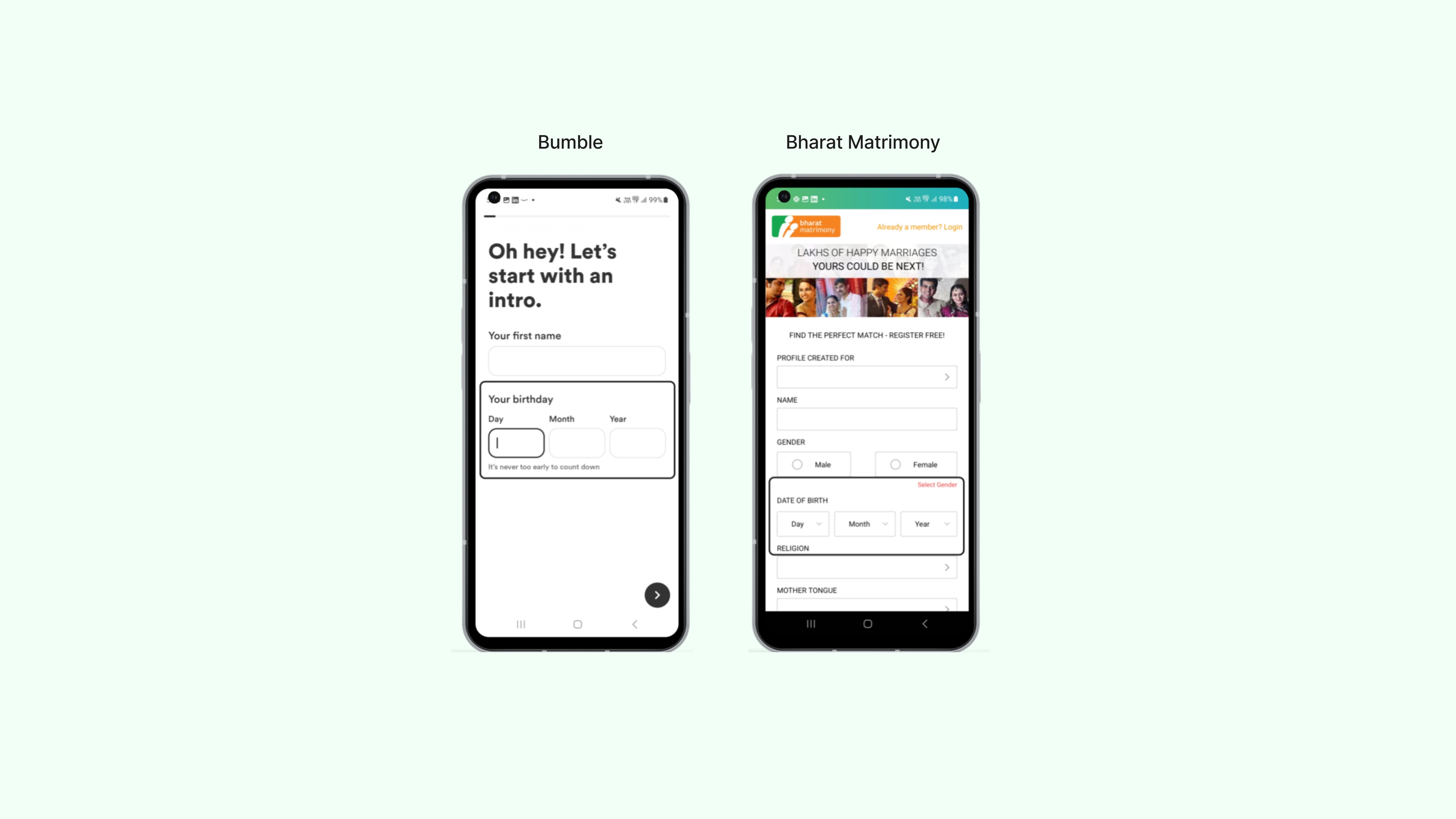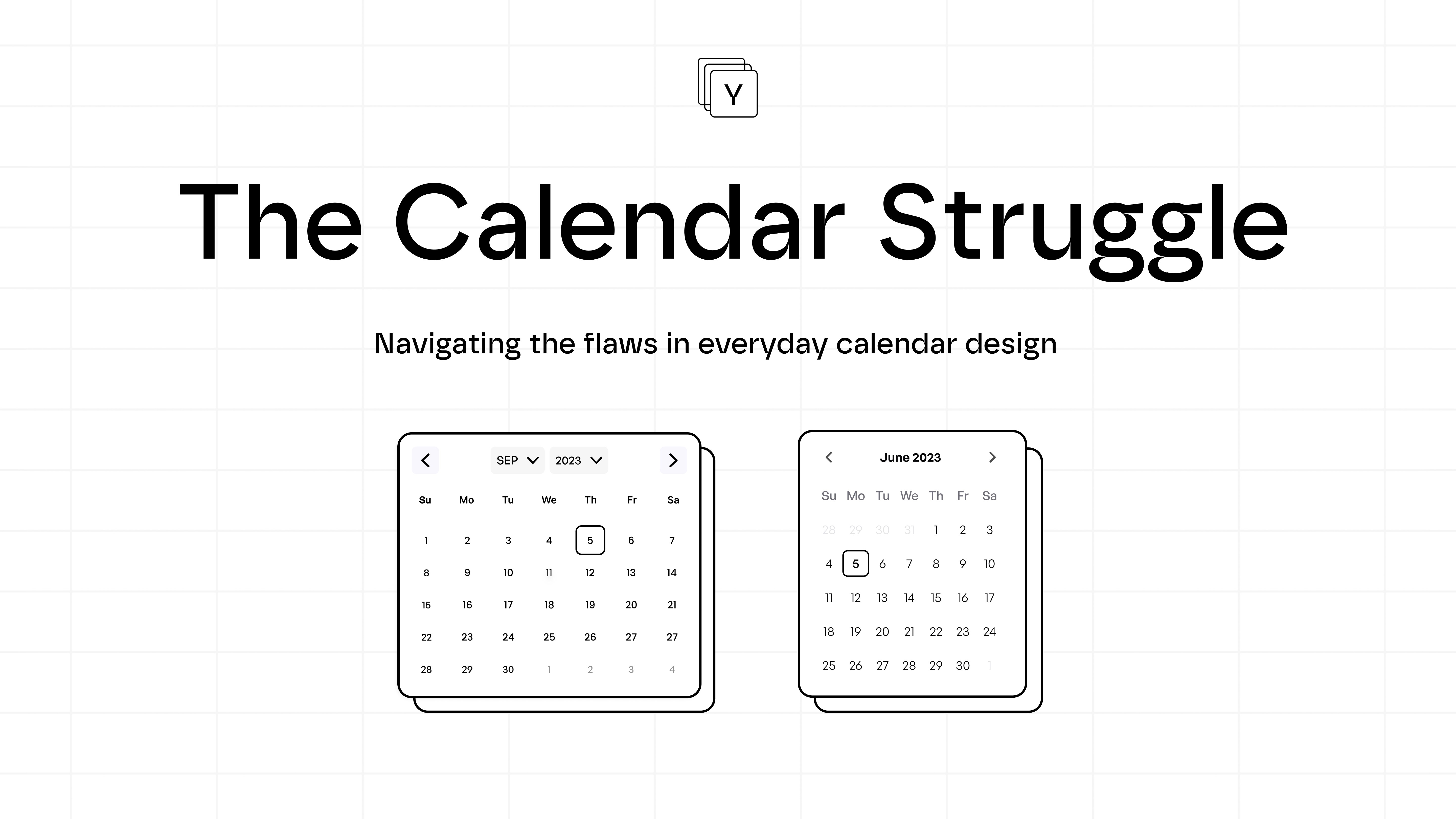Has anyone else ever found themselves just… clicking away on a calendar, trying to pick your date of birth? Let’s say you were born in the year 1997. One minute you're selecting the current month, and before you know it, you're on a personal mission to time travel through every single month in the last two decades. This is all because this calendar requires multiple clicks just to change a single year. And that’s when it hits you: this type of calendar was clearly designed for booking a doctor’s appointment next week, not for picking the year of your birth. Because, let’s be real, if you’re booking an appointment, you’re probably not planning it in 1997.
Whether it’s for booking appointments, entering a date of birth, or planning future events, the calendar UI plays a pivotal role in ensuring smooth, user-friendly interactions. However, certain types of calendar designs used in the wrong context can quickly lead to frustrating user experiences, driving users away from otherwise functional platforms. Let’s take a tour of calendar types and figure out where things go from “smooth sailing” to “please make it stop.”
The Two Types of Popular Calendar UI Designs
These are the calendars most popular in user interfaces; each has its pros and cons, depending on what you're trying to do:
Single-month selector
This design features allows you to navigate through months only. Perfect for when you’re booking a dinner table for next week or scheduling a quick appointment. It’s all about simplicity and speed for short-term date picking. You’re not planning a grand event from 10 years ago, just grabbing a table for tonight. This type of calendar turns into a headache, requiring 5+ clicks just to switch one year and testing your patience to the limit.
Month and year selector
This type includes dropdowns for both the month and year; this one’s for when you need to hop back in time or leap into the future. Picture it as your personal time machine, made for those long-term plans where you need a bit more flexibility and control over your date selection. However, this type of calendar makes little sense when you are trying to pick recent dates.

Some real life examples and why you should care
We can find examples of calendar missteps everywhere around us. It’s more common than you might think. A few places where you might spot these issues are e-commerce websites, event booking systems, and travel booking sites.
1. AstroYogi, one of India's leading astrology platforms, surprisingly stumbles when it comes to its date-of-birth picker. Given that astrology relies heavily on the exact date and time of your birth to provide tailored readings and predictions, you’d expect a seamless user experience on this particular step. For platforms like these, the stakes are even higher because your date of birth isn’t just a data point; it’s the gateway to unlocking personalized insights.
2. Even major booking platforms like BookMyShow and MakeMyTrip, fall into the same frustrating UI trap. These platforms typically use a standard calendar for booking tickets or accommodations, which works perfectly for recent dates. The trouble starts when they apply this same calendar design to date-of-birth selection. It’s like applying a one-size-fits-all approach where a tailored solution is needed—works in some cases but falls short in others. While your DOB may not be the heart of their service, ensuring that entering it is as smooth as their booking process is still important.

So why should you care? Well, if you’re stuck in the endless clicking, that’s time you’ll never get back. And if you’re on mobile? It’s even worse. With every tap, the screen seems to shrink, the task feels bigger, and your patience, smaller. Before you know it, you’re considering giving up. Who’s going to sit around endlessly scrolling through months on their phone when they’ve got better things to do? And when things get this complicated, you can’t blame yourself for getting annoyed and abandoning the whole thing.
For the website, this is bad news. It means higher bounce rates, fewer conversions, and ultimately, lost opportunities.
Best practices for Calendar UI design
Apart from obvious solutions like using the right types of calendars in the right settings, we can also implement these solutions for further simplifying the process:
Custom Input
Providing a field where users can directly type in the year, DOB and month, can further streamline the process. Another way to design this is by using dropdowns for all 3 fields. These methods are especially popular on dating and matrimonial sites, where precise date-of-birth entry is crucial for generating accurate profiles and matches.

The iPhone’s 3D looking clock feature
This is a very good example of how intuitive date selection can be. Instead of making users click through multiple tabs or scroll endlessly, this interface presents a sleek, rotating 3D-style picker for the day, month, and year. It allows users to adjust all three fields with a simple swipe, making the entire process feel effortless. It offers a tactile and visually engaging way to adjust variables, hence aligning with the modern demand for seamless, user-friendly design.

